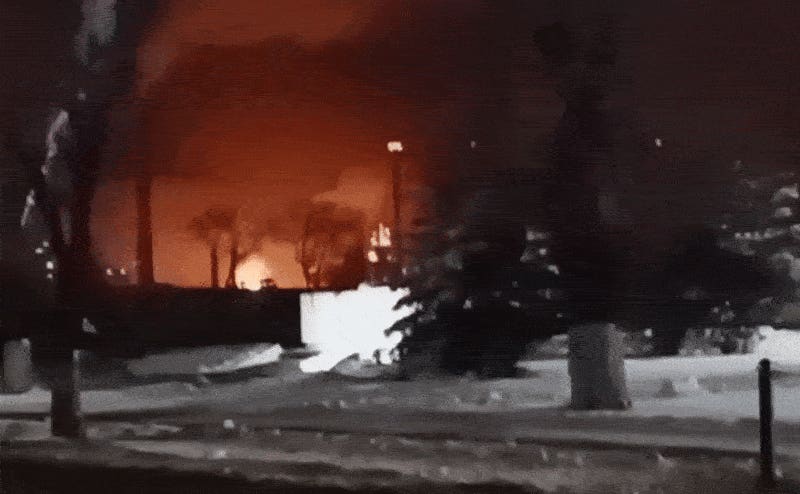Ukrainian drone and missile strikes targeting Russian oil refineries, storage tanks and pipeline pumping station wreaked havoc on Russia’s most important industry last month, temporarily depressing Russian petroleum product production by as much as a tenth.
This month might be worse for the Russians as more and better Ukrainian munitions attack even more frequently. On Tuesday night, Ukrainian drones flew a distance of at least 450 miles to strike the Rosneft oil refinery in Saratov, in southern Russia.
Videos from the ground depict flames rising high about the facility. “Ukrainian sanctions on the Saratov refinery are unmanned and irreversible,” quipped the Unmanned Systems Forces, the Ukrainian military’s new drone branch.
The Saratov facility refines around 7 million tons of oil a year. That’s more than 2% of Russia’s refining capacity, spread across around three dozen major plants. Refineries can be repaired, of course. But not when they keep exploding.
Ukrainian munitions previously hit oil facilities in Saratov last month. On Friday, drones hit an oil pumping station in Rostov and an oil refinery in Volgograd. And on Feb. 5, a Ukrainian attack—reportedly by a new type of cruise missile—struck an oil depot in Krasnodar Krai.
The unrelenting pace of Ukrainian strikes complicates repair efforts and saps the resources Russian firms need to boost oil production and exports to meet state goals. Rosneft, Russia’s top oil producer, announced it may abandon modernization plans.
It’s not that the Russians aren’t trying to prevent the attacks. Ukrainian analysis group Frontelligence Insight noted “enhanced camouflage and protective measures” at some Russian bases and fuel depots.
But Russian air defenses are stretched thin. The oil industry is spread across the vastness of Russia and, as retired U.S. Army Lt. Gen. Mark Hertling explained, “you can’t defend everywhere.”
Follow me on Twitter. Check out my website or some of my other work. Send me a secure tip.
Read the full article here





